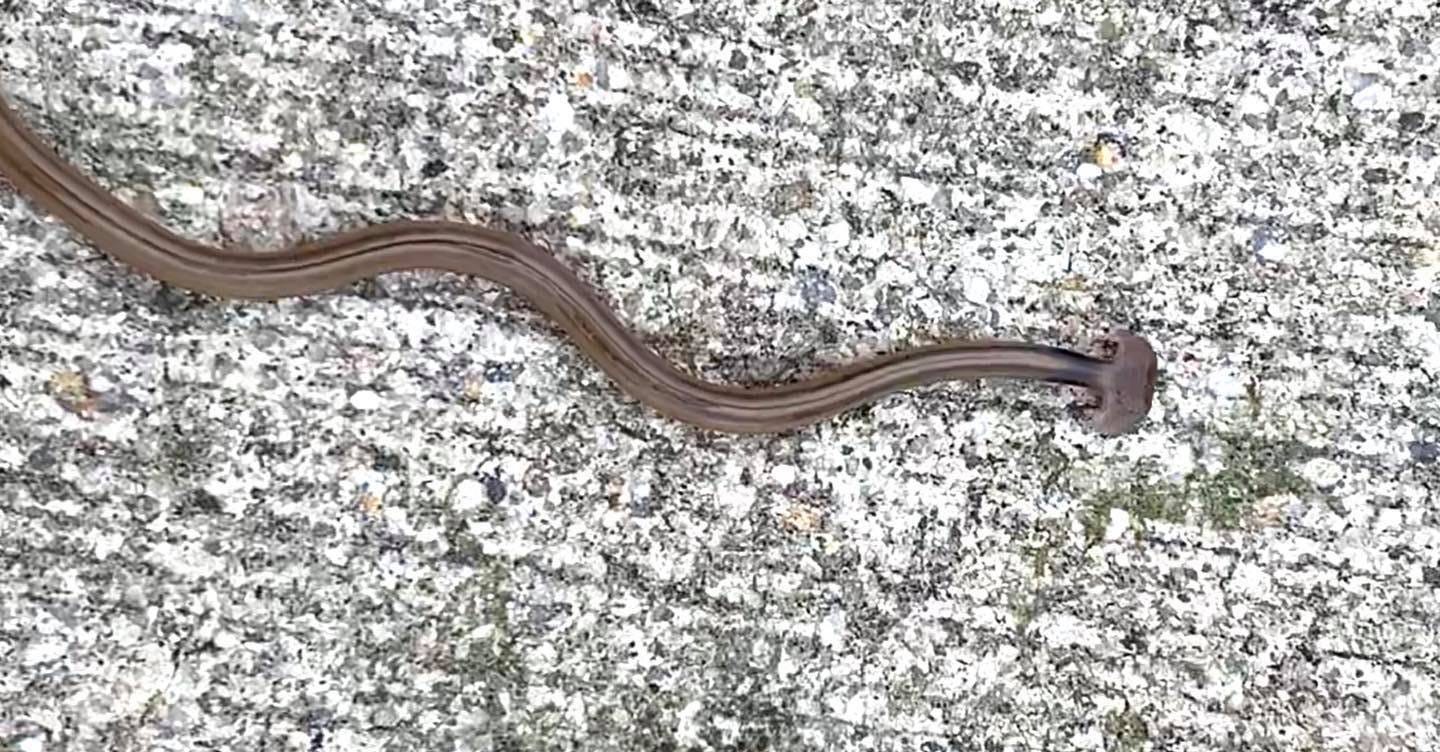
Virginia Wildlife Management
- A Virginia wildlife management company was puzzled when residents sent them a video of a “snake” they hadn’t before seen.
- The snake actually turned out to be a giant, freak-show of a worm that reproduces by cutting itself in half.
- The worms likely originated in Asia and were transported to the US and parts of Europe through the plant trade.
- Visit Insider’s homepage for more stories.
It turns out that a”freak of nature” snake found in Virginia is actually not a reptile at all, but rather a giant invasive worm that is nearly impossible to kill, The Charlotte News & Observer reported.
Virginia Wildlife and Control, a pest service company, took to Facebook last week after struggling to identify a snake that was spotted in Midlothian. The creature was about a foot long and had a half-moon shaped head.
Having never come across a snake like this, the company asked its followers for help.
Ultimately, it was identified as a hammerhead flatworm, an invasive species thought to be native to Asia. There are about 160 species of them.
The flathead worms are thought to have first arrived in the US through the trade of plants decades ago and are becoming more common.
The nightmarish pests are not harmful to humans or pets, The Virginia-Pilot reported in 2013.
They prey upon earth worms, but when hungry can eat also eat themselves, WKDQ radio previously reported.
While they can sexually reproduce with other hammerhead flatworms, most of them just split themselves in half and let the back half grow into a full worm, according to The Texas Invasive Species Institute.
This happens when a small piece of the worm pinches off. The front of the worm will slither away, and within about 1o days a new head will form, according to the Institute. A worm can regenerate a few times a month.
This process makes the worm especially hard to kill.
The hammerhead flatworm has been spotted in US states before, like Florida and Tennessee. They also made their way to France and were somehow able to "run amok" undetected by scientists for two decades, The Scientific American reported.
- Read more:
- A New Jersey man was fined $5,000 for keeping 15 venomous snakes and 30 tarantulas in his home
- Doctors found a worm over an inch long inside a woman's tonsil after she ate sashimi
- A woman pulled a half-inch-long worm out of her eyeball after a trail run, and then found 3 more

